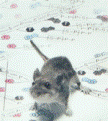Papers in the Biological Sciences

Jay F. Storz Publications
Document Type
Article
Date of this Version
2016
Citation
Journal of Experimental Biology (2016) 219: 3,190-3,203
doi: 10.1242/jeb.127134
Abstract
In air-breathing vertebrates at high altitude, fine-tuned adjustments in hemoglobin (Hb)–O2 affinity provide an energetically efficient means of mitigating the effects of arterial hypoxemia. However, it is not always clear whether an increased or decreased Hb–O2 affinity should be expected to improve tissue O2 delivery under different degrees of hypoxia, due to the inherent trade-off between arterial O2 loading and peripheral O2 unloading. Theoretical results indicate that the optimal Hb–O2 affinity varies as a non-linear function of environmental O2 availability, and the threshold elevation at which an increased Hb–O2 affinity becomes advantageous depends on the magnitude of diffusion limitation (the extent to which O2 equilibration at the blood–gas interface is limited by the kinetics of O2 exchange). This body of theory provides a framework for interpreting the possible adaptive significance of evolved changes in Hb–O2 affinity in vertebrates that have colonized high-altitude environments. To evaluate the evidence for an empirical generalization and to test theoretical predictions, I synthesized comparative data in a phylogenetic framework to assess the strength of the relationship between Hb–O2 affinity and native elevation in mammals and birds. Evidence for a general trend in mammals is equivocal, but there is a remarkably strong positive relationship between Hb–O2 affinity and native elevation in birds. Evolved changes in Hb function in high-altitude birds provide one of the most compelling examples of convergent biochemical adaptation in vertebrates.
Included in
Biochemistry, Biophysics, and Structural Biology Commons, Ecology and Evolutionary Biology Commons, Zoology Commons


Comments
Copyright © 2016, Company of Biologists. Used by permission